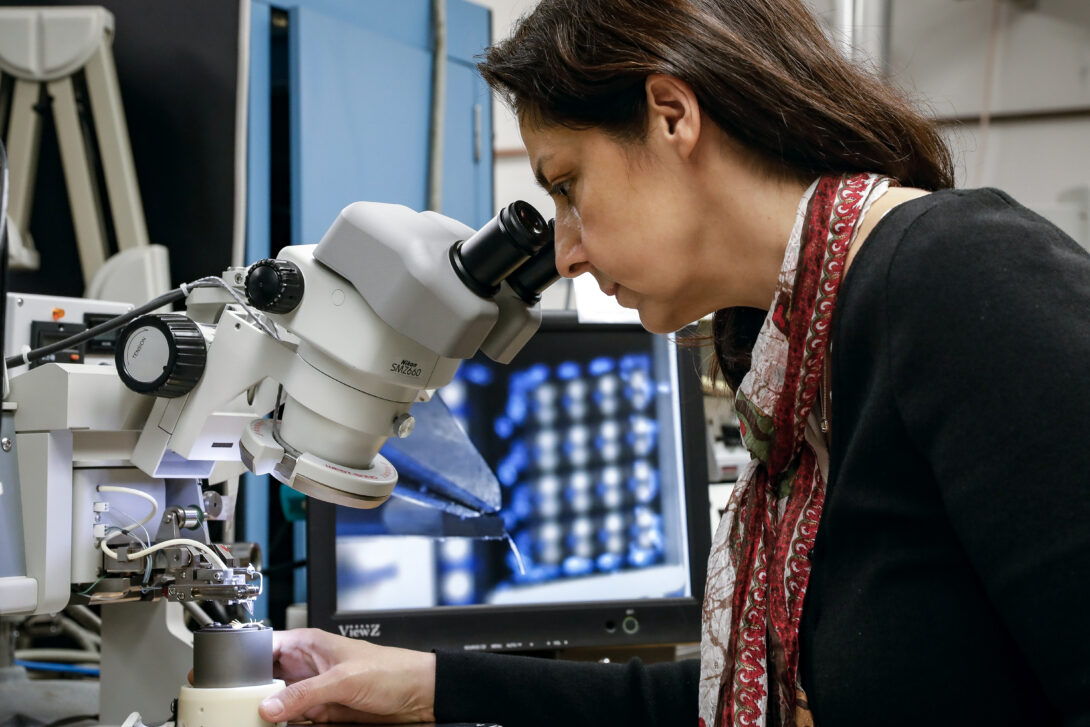Taking the heat
taking the heat

Monitoring the health of structures is critical for avoiding disasters. This is especially important when dealing with nuclear reactors where a problem can be devastating.
In an effort to provide technology to monitor those structures and also withstand high temperatures, professors Didem Ozevin and Mathew Daly, both of civil, materials, and environmental engineering, are developing a high-temperature, multi-functional Micro-Electro- Mechanical-Systems sensors to provide ultrasonic structural health monitoring of piping systems in liquid metal-cooled fast reactors.
The sensor is made from radiation-resistant materials, which will offer a longer operational lifetime in these extreme environments.
“There is no such temperature sensor on the market right now,” said Ozevin, who has been a leader in this field with the development of MEMS acoustic sensors for the detection of damage and defects in critical infrastructures.
The capabilities of this sensor are unique due to its dual functionality, multi-mode selectivity, and its ability to be mass manufactured at a low cost. It will be designed to function at 650°C, which is the typical operating temperature range of a nuclear reactor.
In addition to developing and testing the sensors in labs at UIC, the researchers are partnering with Argonne National Laboratory where they will utilize the Mechanisms Engineering Test Loop for advanced reactors and test the sensors on its piping system.
“These are for advanced reactors and the idea is to operate for ten years without any interruptions. The real-time monitoring will minimize maintenance costs by reducing the probability of forced shutdowns related to the failure of critical reactor components,” Ozevin said.
The sensors can be used anywhere where there is high temperature, such as in aerospace to monitor areas near the engines.